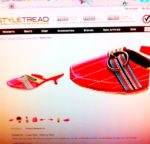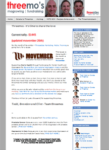Everyone likes and reacts better to a more personal experience and your website should be no exception.
Gone are the days when websites were simply an online business card – something to determine how legitimate your organisation is and how to contact your business offline. Fortunately, we’ve also moved past the old creepy “Welcome back” experience at the top right hand corner of sites.
These days, there is a renewed focus in “fixing” websites to optimise the experience to the single benefit of the niche and high revenue customers identified. Surely there is a better way to enhance your businesses visitor experience without excluding the majority? There is. Create subtle and real-time personalisation’s.
Simple personalisation tricks are designed to complement your customer’s buying stage and encourage them to transition into your buying cycle more easily. This will result in better engagement and converted sales.
So what is personalisation? It’s the difference between shopping at a convenience shop where the tiller is asleep and you having to search through all the aisles yourself compared to being greeted, seated and having your favourite meal recommended to you by a waiter who not just remembers you but what you enjoyed at his restaurant last time.
It isn’t just the addition of lots of benefits and features designed to cater for everyone, it’s a simplification and a decluttering process especially through navigation tools, it simplifies the experience based on your website’s end goals. Chances are you’ve probably experienced personalisation on websites already. Amazon provides recommendations on previous product searches and facilitates “1-click buy” options – easy to use for the consumer, and great for the company who is fast tracking conversions and upselling.
But you don’t have to start big. There’s plenty of simple personalisation tricks that can fast track your customers through the buying cycle, resulting in better engagement and converted sales.
Some minor adjustments you could consider making on your ecommerce website include:
- Review your Google Analytics to identify the amount of first time users who haven’t had time to know whether they want to “sign up” to your site or seen any products that would make free delivery an attractive offer. Why not incentivise a poke around by offering a deal?
- Take note of a user’s time and day of visit, displayed in Analytics, which can indicate whether upselling faster or cheaper delivery will likely convert a sale. Their location can determine if flagging international costs or an items availability overseas are required.
A visit from a enewsletter will already have all the details needed to land the visitor on a custom landing page, but often it can be customised to reflect their demographic and the segment they’ve been categorised into, based on their Customer Relationship Management tool rating.
It’s always hard to start but remember: start soon and start small, then track your success and build. At the current rate of ingenuity and technology, there will never be a final optimal design to implement, but stalling from making a start will leave you behind your competitors.
Image: Shutterstock






